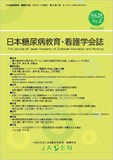Japanese
English
- 販売していません
- Abstract 文献概要
- 参考文献 Reference
非糖代謝異常妊婦が過剰発育児を出産した要因を後方視的に検討した.急性期病院1施設の2021年度分娩症例273件より,死産・多胎および2,500g未満の児を出産した妊婦,糖代謝異常妊婦を除外し,A群(3,500g以上の児を出産した24件),B群(2,500〜3,499gの児を出産した192件)の妊婦を比較した.A群はB群より分娩週数が遅く(p<0.001)非妊娠時BMIが高く(p=0.028)初期血糖値が高かった(p=0.037).新生児体重は分娩週数と非妊娠時BMI に相関を認めた.多変量解析の結果,過剰発育児を出産した要因は,分娩週数の遅延,非妊娠時BMI の高値,初期血糖値の高値,不妊治療の既往であった(オッズ比〔95% CI〕:2.46〔1.46-4.15〕,1.20〔1.07-1.35〕,1.06〔1.00-1.12〕,5.91〔1.26-27.6〕).
糖代謝異常の診断を受けていなくても,過剰発育児のリスク要因を考慮した予防介入の必要性が示唆された.
The present study aimed to determine the factors that contribute to the delivery of overweight babies by pregnant women who have not been diagnosed with an abnormal glucose metabolism. From 273 delivery cases in fiscal year 2021 at one acute care hospital, the pregnant women of group A(24 cases who delivered a baby weighing 3,500 g or more) and group B(192 cases who delivered a baby weighing 2,500-3,499g) were compared, excluding the pregnant women who delivered stillbirth, multiple births, a baby weighing less than 2,500g, and those with an abnormal glucose metabolism. Group A had a later delivery week(p < 0.001),a higher nongestational BMI(p = 0.028),and higher initial blood glucose(p = 0.037) than group B. The neonatal weight correlated with the week of delivery and the non-pregnancy BMI. A multivariate analysis revealed the factors contributing to the delivery of overweight babies to include a delay in the number of weeks of delivery, a high non-gestational BMI, a high initial blood glucose level, and a history of infertility treatment(odds ratio[ 95%CI]:2.46[1.46-4.15], 1.20 [1.07-1.35], 1.06[1.00-1.12], 5.91[1.26-27.60]).
The necessity to develop preventive intervention strategies while considering the various risk factors of overweight babies was indicated, even when the mother has not been diagnosed to have any glucose metabolism abnormality.
Copyright © 2024, Japan Academy of Diabetes Education and Nursing. All rights reserved.


